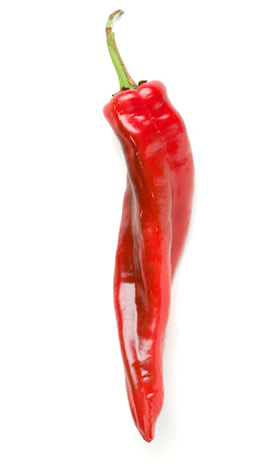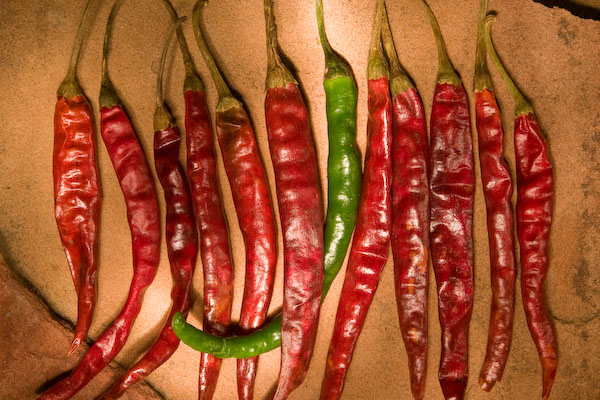'Arizona20' Variety of Red Chile |
SITE MAPEatMoreChiles.com Site Pages: Eat More Chiles Home Slideshow Out-takes From The Chile Pepper Story Arizona Highways Magazine Chile Story Scoville Heat Scale Chart and Explanation Legal Notice & Copyright Information Using PayPal in the gift shop: How Pay Pal Works -- Your Privacy & Security with PayPal
Friends of EatMoreChiles.com Arizona Highways Magazine
Some of Our Favorite Chile Pepper Websites *For superior handcrafted dry rubs, the award winning Chile Chili, as well as bulk spice and chiles, check out the awesome Just Simply Good Stuff web site! *Educational and agriculture information at Chile Pepper Institute at New Mexico State University (NMSU). *Fiery Foods is a super site for hot foods and barbecuing. *EatMoreChiles.com (you're already here, of course!)
|
HOT Pepper Facts
• In 2007, salsa surpassed ketchup as the most widely used condiment in the USA. • A Chile’s heat or intensity is commonly, but incorrectly, said to come from the seeds in the chili. The heat actually comes from capsaicinoids - the combination of capsaicin (the active component of a chile) and a few other related chemicals - that is found along the placental tissue in the center of the chile where the seeds are found.
|
Copyright © 2008-2017 AZP WORLDWIDE. All rights reserved. |


